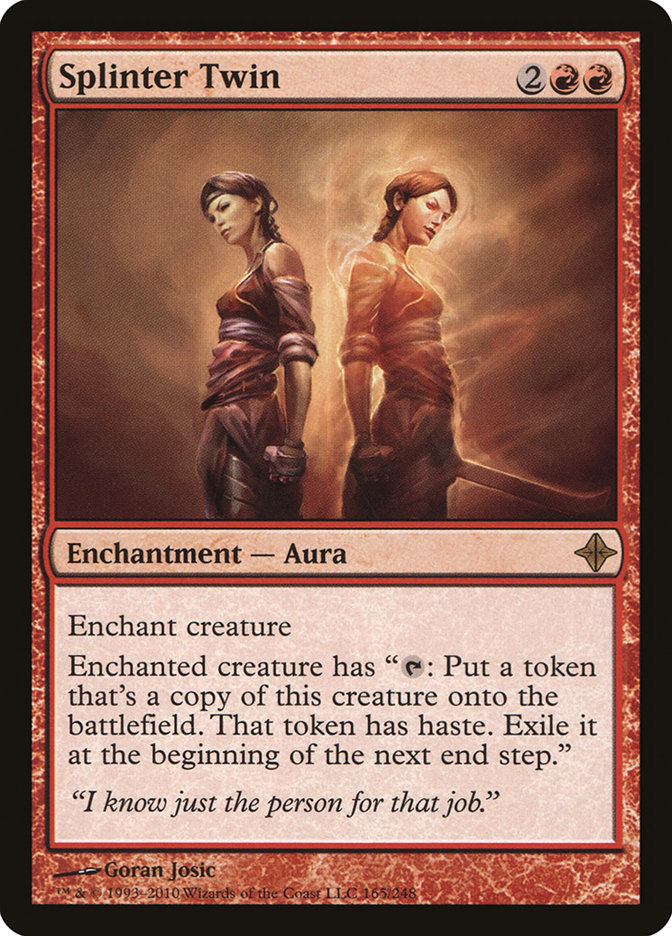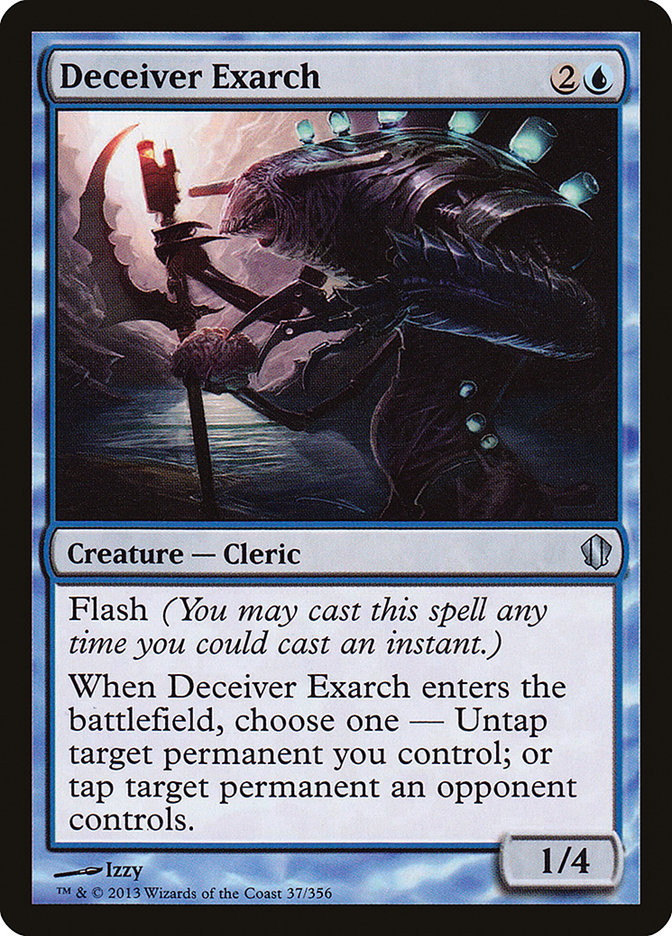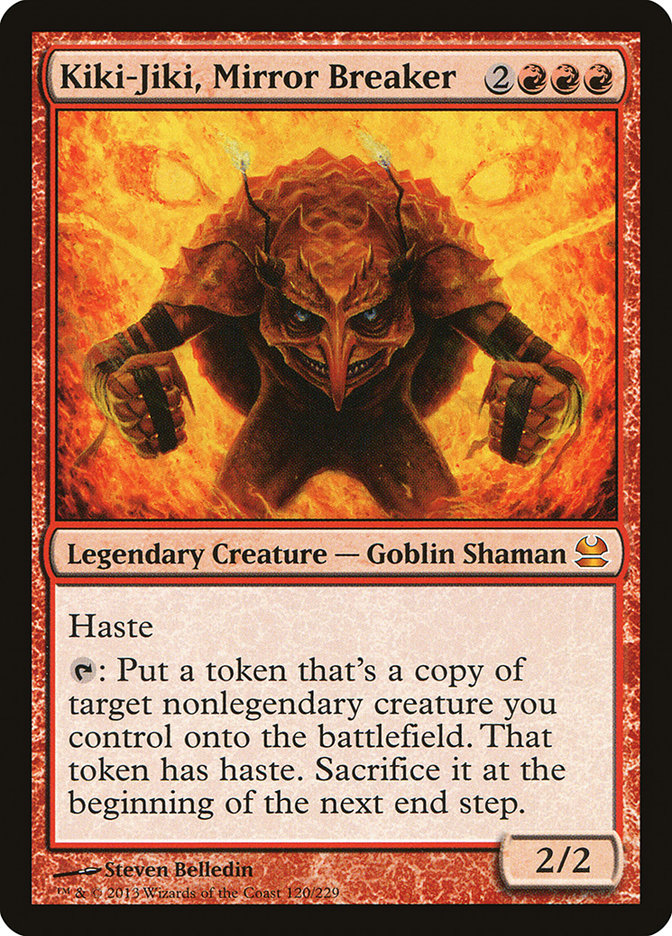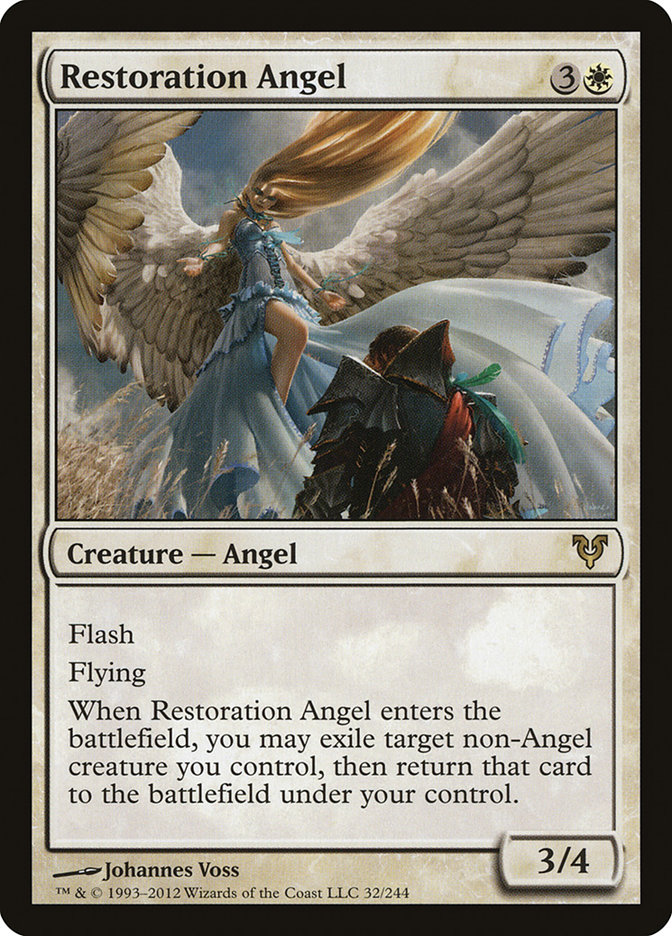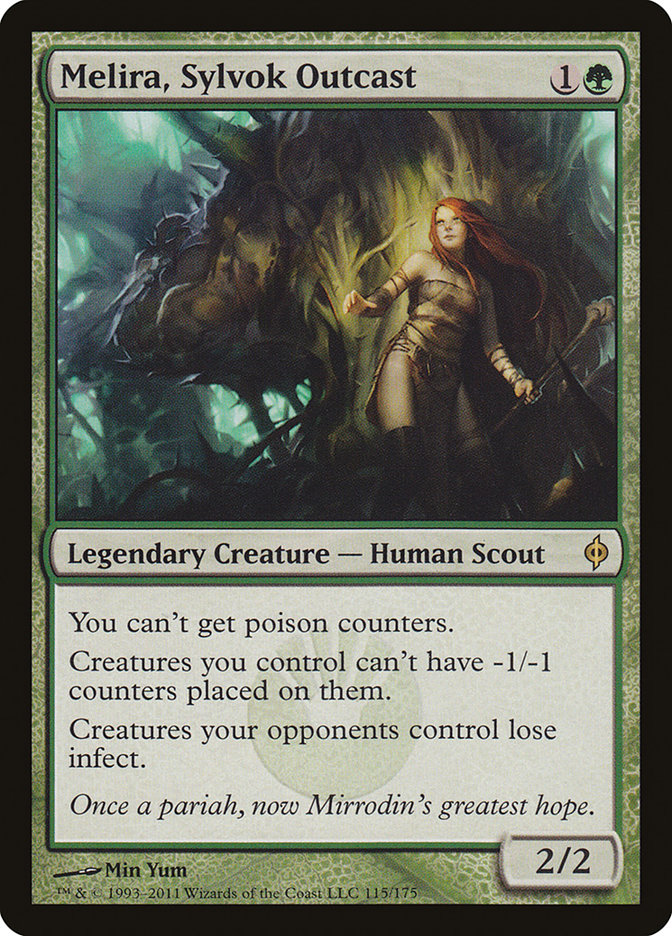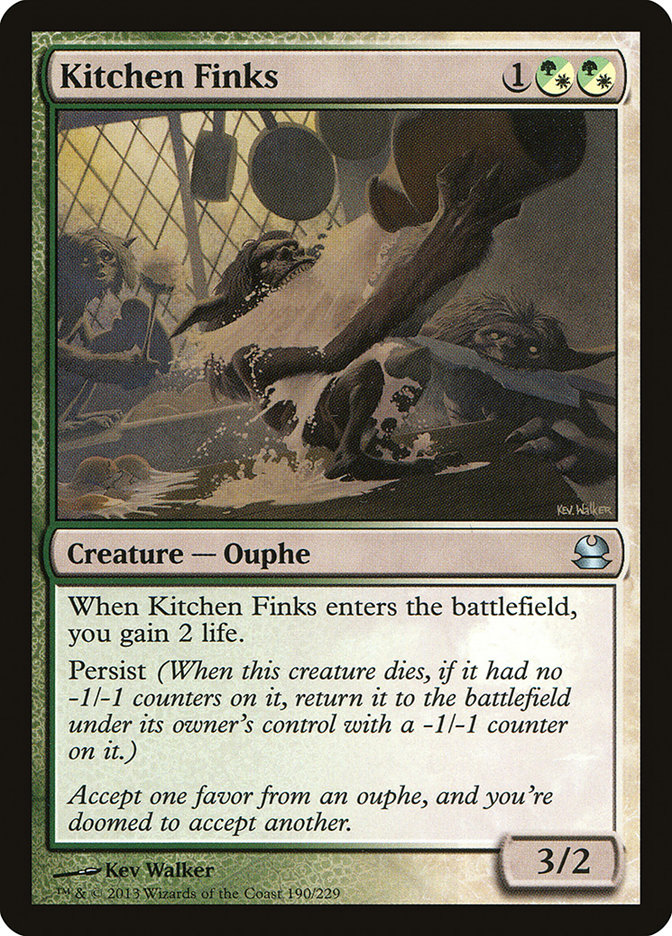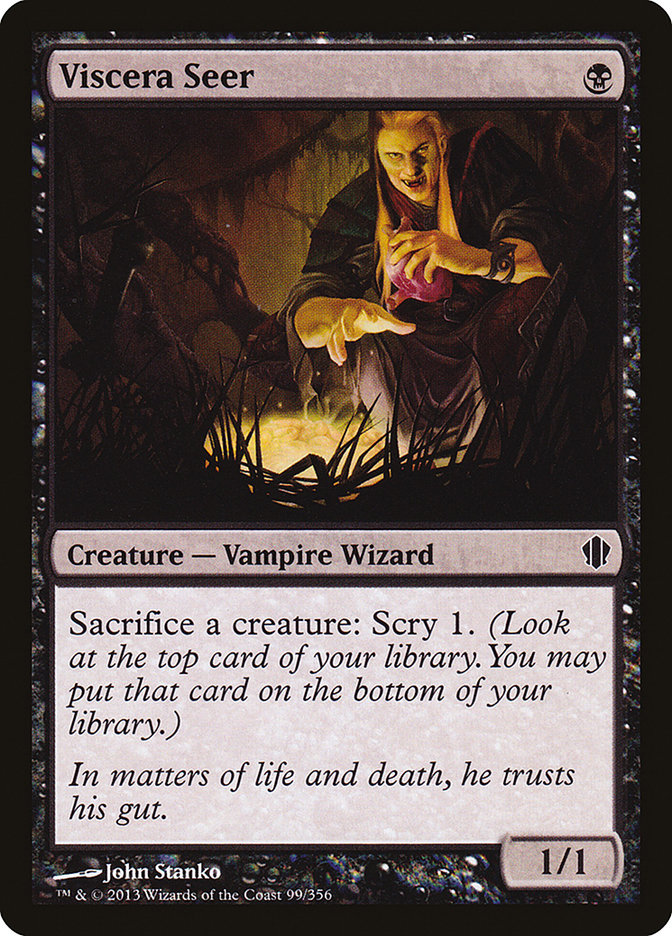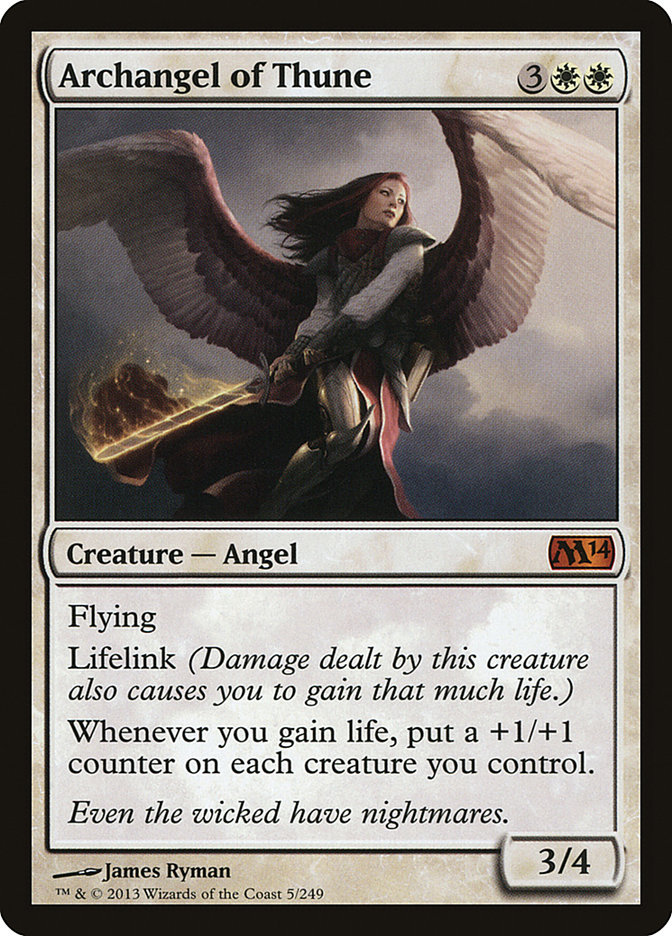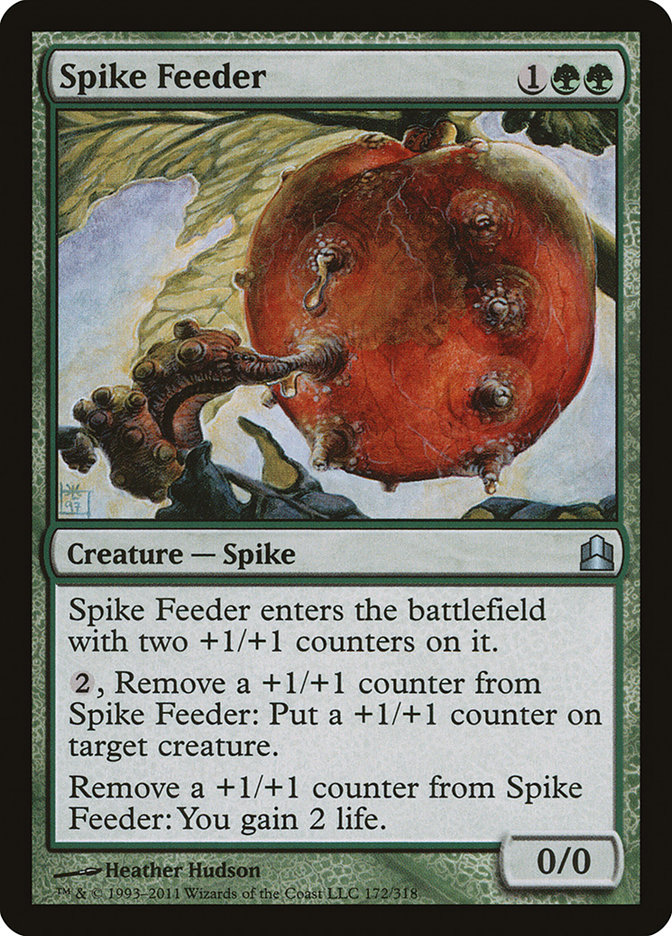As far as creature combo decks go, Modern is chock full of them.
People need to maindeck removal spells, as the best combos in Modern are fragile ones based on taking opportunities during open windows and establishing
the proper setup to combo out unimpeded. Since disruption is so plentiful, each creature combo deck has adapted to provide reasonable pressure while still
having access to their combos.
Infect is no different.
An Infect creature and a smattering of pump spells is the main goal while having backup protection with cards like Apostle’s Blessing and Vines of
Vastwood. Out of the sideboard you’ll see more protective elements like Spell Pierce, Dispel, or Wild Defiance. Often these cards are versatile and
important enough to find their way into the maindeck.
However, as explosive as Infect can be, if people want to beat it they certainly can. The creatures in Infect are small and can be blown out by a variety
of spells. Electrolyze is the main offender as a potential two-for-zero. Melira, Sylvok Outcast is accessible to any Green player and a big part of the
popular and powerful Melira Pod strategy. And, of course, any deck can play Spellskite, and it shows up in many maindecks as well.
There’s no short list of good sideboard options against Infect either. If your opponents never want to lose to a one-toughness creature, they can show up
with anything from Golgari Charm, Electrickery, Zealous Persecution, or the backbreaking Night of Souls Betrayal. Heck, even Gut Shot is often enough to
send Infect back to the Stone Age.
So why Infect?
Because people can’t fit those cards in their sideboards and still be capable of beating everyone else in the field.
Melira, Sylvok Outcast, Spellskite, and Golgari Charm all attack Infect in different ways. People have those cards in their 75 not necessarily against
Infect but because they’re also good against what they expect to play against. Infect gets hit by a lot of splash damage. Spellskite is good against
everything from Splinter Twin to Bogles. Melira Pod plays a bunch of one-toughness accelerants that you want to kill.
What Infect has to do is adjust, sometimes on a week-to-week basis. It’s impossible to dodge all the splash damage cards in Modern at once, but what can be
done is to shift the archetype in a direction away from the current flavors of hate going around. Sometimes Infect wants to be faster, other times slower
and more resilient. Sometimes a better manabase is a concern, while at others you want access to the strong cards a third color can provide.
Today I’m going to go through different Infect decks to show that even though your Infect deck may be getting whooped by a metagame, adaptations can be
made, and a successful list may not be too far off from what you have. Let’s start with the most common ones which are the lists of recent success from
Grand Prix Boston-Worcester:
Creatures (16)
Lands (21)
Spells (23)
- 3 Might of Old Krosa
- 4 Vines of Vastwood
- 4 Groundswell
- 3 Distortion Strike
- 4 Mutagenic Growth
- 1 Apostle's Blessing
- 3 Gitaxian Probe
- 1 Wild Defiance
Sideboard

This is the build that I’ve been advocating and playing over the last couple months. The maindeck Viridian Corrupters were a response to the popularity of
the Birthing Pod and Affinity decks that came from Grand Prix Richmond. The manabase is solid and is capable of playing a nickel-and-dime game of getting
in small hits for one or two with a Glistener Elf or Blighted Agent alongside a Noble Hierarch exalted trigger or a Pendelhaven.
The sideboard is a bit slim however. Hunt the Hunter and Twisted Image are fine but pretty narrow. Wild Defiance is good for stopping damage-based removal
preemptively like Lightning Bolt and Electrolyze, but it can sometimes be slow. When Viridian Corrupters don’t have any artifacts to blow up, they’re too
inefficient which leads to them being sideboarded out, which leads to a reduction in the deck’s threat density. Every deck in Modern sideboards out slow or
dead cards for more removal, and their plan is often to remove all of your Infect creatures and to win with whatever threat they have laying around.
Creatures (16)
Lands (20)
Spells (24)
Sideboard

Wesley also made Top 8 of Grand Prix Boston-Worcester with an “older” version of Infect that plays black for Plague Stinger and discard out of the
sideboard. Four Gitaxian Probe and four Apostle’s Blessing, along with Overgrown Tombs that need to be untapped more often than not, leads to the deck
doing a ton of damage to itself. The upside is a touch more evasion, a threat that is immune to Slaughter Pact and Shriekmaw, and better sideboard options
in Abrupt Decay and Inquisition of Kozilek.
This version is more blunt and goes for an explosive kill moreso than its U/G cousin. The interactive cards of Viridian Corrupter and Wild Defiance are
eschewed for spell consistency. We also see Rancor, which is a notable nonbo with Wild Defiance, but a great tool at powering through a field full of
Lingering Souls and Birds of Paradise chump-blockers.
Creatures (8)
Lands (22)
Spells (30)

Certainly a deck designed under budget constraints, Mono-Green Infect is not without its upsides. The mono-colored manabase means that it does very little
damage to itself, making it tougher for the red decks to beat you and leaving you less vulnerable to losing to a Snapcaster Mage + Lightning Bolt deck. You
get another turn or two when you’re racing and can be a bit more patient when going for it knowing that you aren’t under the gun to act.
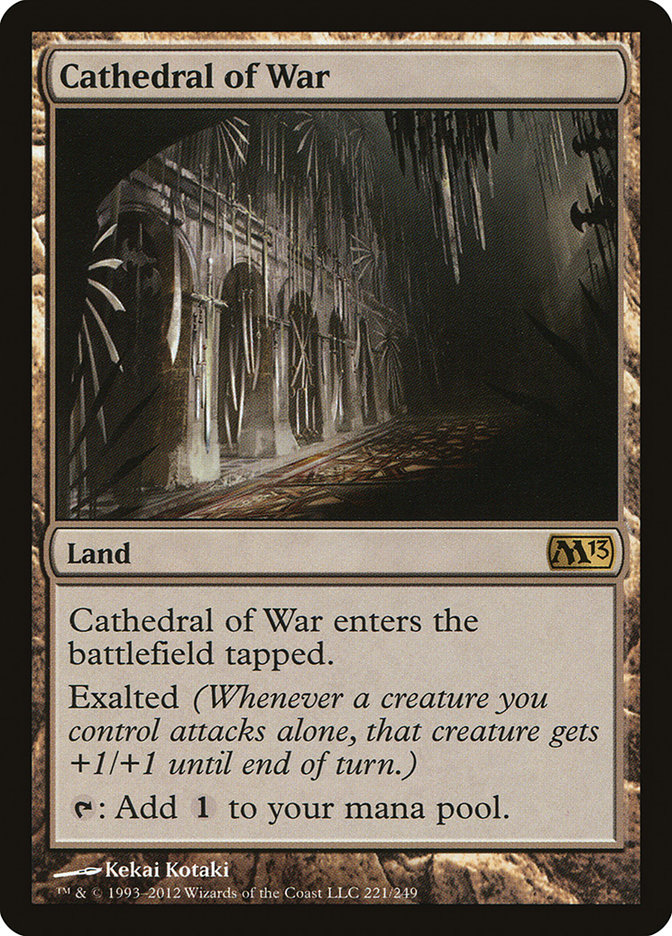 Being a single color, you also get to play a full four copies Cathedral of War. I’m a big fan of lands that do more than just
Being a single color, you also get to play a full four copies Cathedral of War. I’m a big fan of lands that do more than just
tap for mana, and without needing to hit additional colors on time, you’re rewarded with the ability to play lands with other abilities. With a handful of
protection and pump spells, it’s nice to start the ensuing battle with exalted triggers on the stack, forcing their hand if they have damage-based removal
like Electrolyze or Lightning Bolt.
Mono-Green Infect is a good place to start if you can’t afford or don’t have access to fetchlands, Noble Hierarchs, or shocklands as the entire deck costs
something like 20% of what the other versions cost. Once you have the chance to acquire the more expensive cards, the next step I recommend for Mono-Green
is to get ahold of some Noble Hierarchs to fit them in, likely replacing the Giant Growths or Groundswells, as they tend to be a bit weaker without access
to fetchlands.
Creatures (12)
Lands (21)
Spells (27)

This list is about as all-In of an approach to Infect as it comes. This four-color innovation that originated from Japan maximizes the possibility of a
turn 2 kill. Assault Strobe acts as a Modern version of Berserk to double the power of a creature to get the game over with as quickly as possible.
Glistener Elf + Assault Stroke plus any of Groundswell, Might of Old Krosa, or two Mutagenic Growth will punish any opponent that doesn’t have early
interaction.
Sylvan Scrying gives the deck a nice toolbox package similar to Crop Rotation in Legacy. Teetering Peeks, Sejiri Steppe, Pendelhaven, and Inkmoth Nexus are
the lands you can search out to fit the appropriate situation. In a pinch, Sylvan Scrying also serves as a mana-fixer. Inkmoth Nexus is the hardest Infect
creature to interact with in Modern, and it’s nice to have an effective four more copies of it.
Flesh // Blood is particularly interesting as it serves as a removal spell for something like Melira, Sylvok Outcast or a Dark Confidant or just any old
creature when you are in a racing position. Since the creature does Infect damage (or normal damage in the case of Melira) even if Blood doesn’t actually
kill the creature, which may come up in the case of a large Tarmogoyf, the damage will place permanent -1/-1 counters on the target. This also proves
useful to kill creatures with Persist. Most often, however, Blood will be used as a finisher when you cast a +4/+4 effect on a 1/1 Infect creature and then
go to the dome for the final five points of poison.
To make room for the double-damage cards, cuts had to be made. Vines of Vastwood is the most notable exclusion, and although it is surely missed, the
four-color manabase can have trouble assembling a ton of green mana at times. With the increased speed of the build we try to ignore the longer games that
require a setup of protection and try to kill as early as possible.
Of all the builds, this one does the most damage to itself since it plays four copies of Mana Confluence and four copies of City of Brass. If games aren’t
ended quickly, a flurry of Lightning Bolt effects can kill you. If you’re in the market for winning or losing a match in record time, this is the version
for you.
Creatures (17)
Planeswalkers (1)
Lands (20)
Spells (22)

It’s always felt like a shame to have a great card like Noble Hierarch in the deck without a way to use the white mana it can produce outside of rare
castings of Apostle’s Blessing for the full amount. Since white mana is already reasonably accessible, a Bant list is something that ought to be explored.
Lost Leonin is a reasonable two-drop Infect creature that is a super-efficient rate for what it is. When looked at as a 4/1 by normal standards we can see
how Lost Leonin is a great threat. Infect is so often capable of dealing nine poison damage in one shot with a 1/1 and two +4/+4 effects, needing an extra
damage from something like Noble Hierarch or Pendelhaven to finish the job. Lost Leonin’s extra point of power cuts out that middle-man completely.
U/G Infect is lacking a good removal spell, and Path to Exile chimes in to fill that role where a painful Dismember once was. No longer are situational
removal spells like Hunt the Hunter and Twisted Image in the sideboard as Path to Exile is all-purpose and equally as cheap. We also see an appearance of
Ajani, Caller of the Pride. Running only two lands that produce white mana is cutting it a bit slim, but with the fetchlands and the mana-producing
creatures, casting Ajani is fairly easy. Both sides of Ajani, Caller of the Pride are quite useful, with the -2 for flying and double strike being the main
attraction, acting as both a pump spell and a form of evasion. If you expect your opponent to have removal for a one-shot approach simply +1’ing Ajani to
develop your board is a nice option as well. You can also activate Inkmoth Nexus even if you don’t plan on attacking with it, and start stacking counters
there if you expect an Abrupt Decay or the like. Just remember to activate Inkmoth Nexus before casting Ajani, Caller of the Pride if that’s what you think
they have to make sure they don’t Abrupt Decay your Ajani before you have a chance to put a counter somewhere.
The best part about white is the effective sideboard options it provides. Stony Silence is great in a wide range of matchups from Affinity to Tron to
Birthing Pod variants. Rest in Peace is another nice one especially since Infect has no use for the cards in its graveyard. Shutting out the persist
portion of the Melira combo, nerfing Snapcaster Mage, and shrinking Tarmogoyf to an 0/1 will often buy you enough time to get the necessary number of hits
in in the longer games.
Creatures (13)
Planeswalkers (3)
Lands (24)
Spells (20)
- 4 Funeral Charm
- 2 Slaughter Pact
- 4 Thoughtseize
- 3 Sign in Blood
- 3 Inquisition of Kozilek
- 2 Dismember
- 1 Victim of Night
- 1 Runechanter's Pike
Sideboard

The main attraction to Mono-Black Infect is gaining Phyrexian Crusader. This guy dodges everything from Lightning Bolt to Path to Exile. Heck, even
Murderous Redcap can’t target him. Much of the removal going around is limited to non-black creatures as well. Neither Slaughter Pact nor Shriekmaw can
touch black Infect creatures.
The Thoughtseizes and Inquisition of Kozileks take the place of the reactive spells that the other Infect lists play: Apostle’s Blessing and Vines of
Vastwood. Gitaxian Probe has been a boon for Infect for a long time to know when the coast is clear to go for the win, but with the discard spells to see
their hand you get to preemptively gain information while clearing out any troublesome removal spell.
Mono-Black Infect goes for more of a long game approach than the others and is incapable of winning before turn 4, and even that is a longshot as
Pendelhaven, Cathedral of War, Runechanter’s Pike, and Funeral Charm are the only ways to increase the power of your creatures. The deck plays a much more
fair game while being more resilient and interactive to what your opponent is doing.
Much like how Patrick Sullivan has a “Red Box” to build whatever burn deck he feels like is good for a metagame, I have an “Infect Box” with the cards I
need to switch in-between archetypes as needed. The base cards of Infect tend to stay the same, and it’s an archetype capable of transitioning to other
colors as needed to sidestep the particular hate cards of a format or just to keep your opponents guessing at what cards you have in your deck. The goal is
to have them playing around the wrong things at the wrong times and to have the wrong answers for your build.

